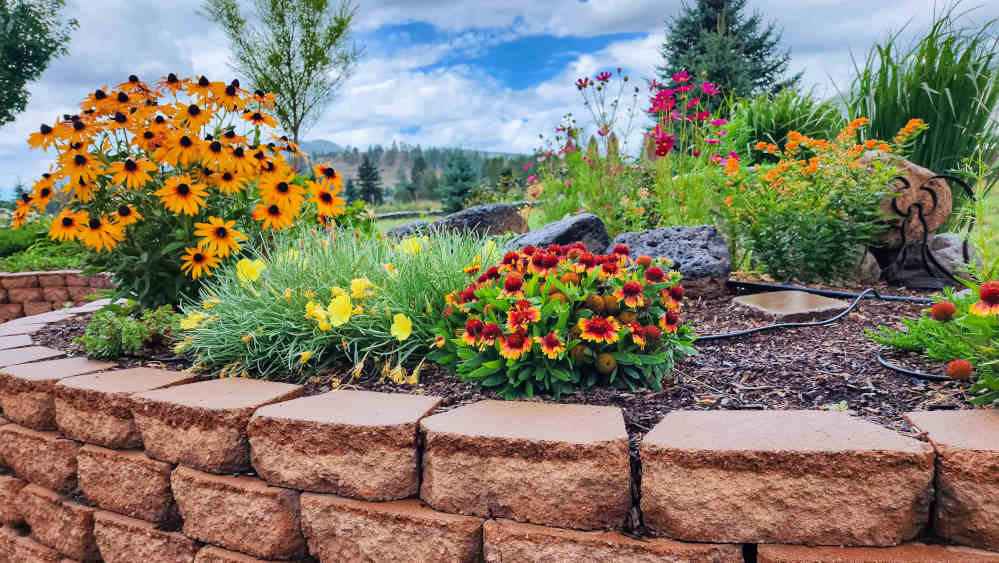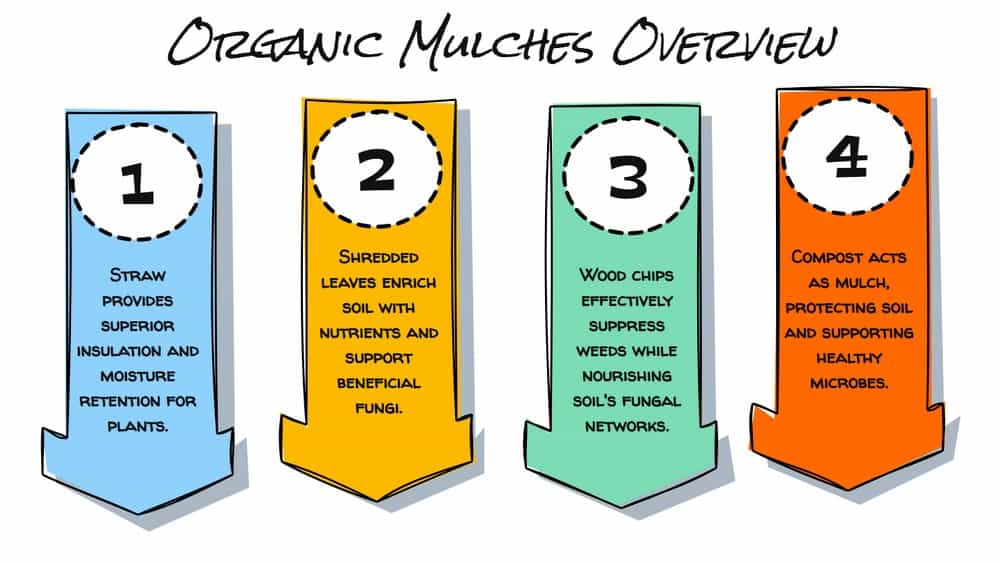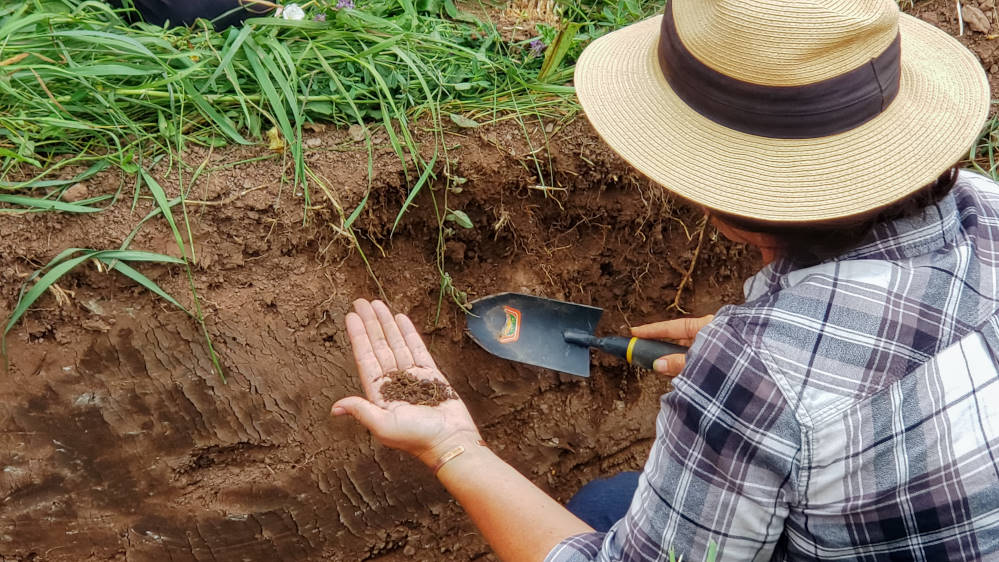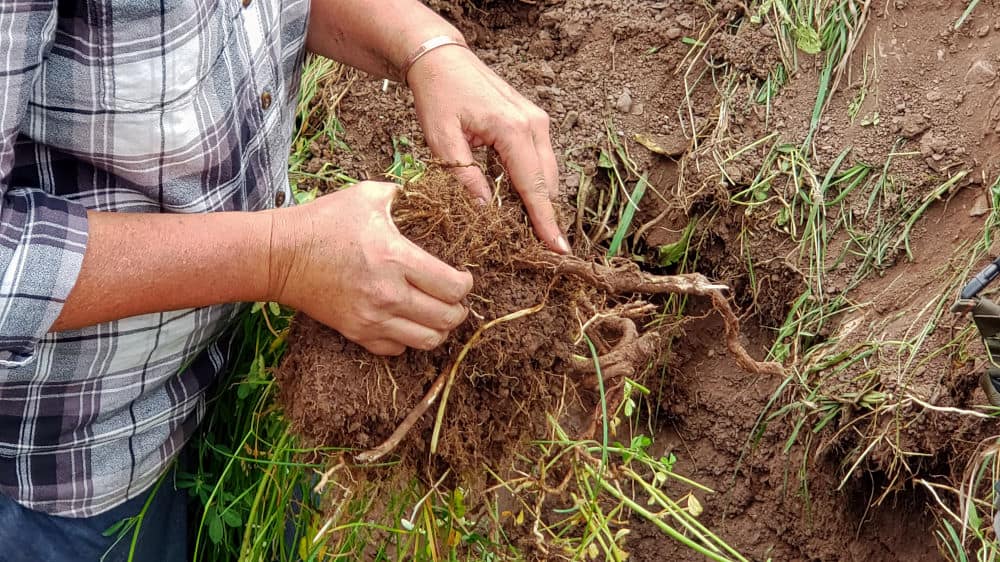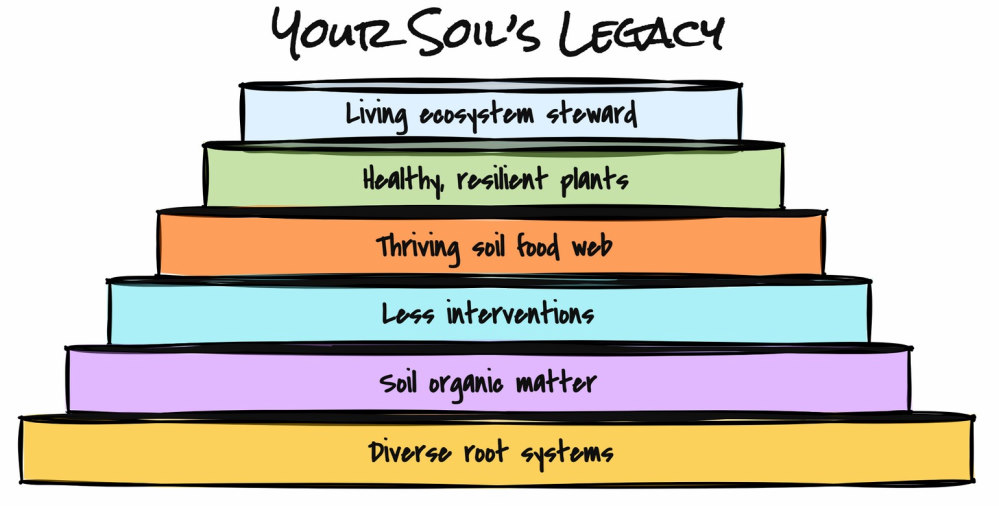Soil Health Insights
Protecting Your Living Foundation
Every gardener begins with a simple, powerful desire: to cultivate a thriving garden that yields beautiful plants and flavorful food. You invest your time and hope, only to sometimes be met with frustrating challenges – stubborn soil, persistent pests, or plants that inexplicably struggle. It’s easy to feel like you’re fighting an uphill battle. But what if the struggle isn’t a reflection of your skill, but of the story you’ve been told about how a garden is supposed to work?
We believe there’s a better story, one where the gardener becomes a partner with nature, not wrestling against it.
The key to this new story lies in shifting your focus from the plants themselves to the living foundation that supports them: your soil. Let’s explore four key principles that demystify soil health and help you to create a resilient and productive garden.
Protecting Your Soil
The Power of Mulch
Protecting the fertile soil structure you’ve built with compost is crucial, as your plant roots are always actively seeking nutrients. You want to keep your soil covered and protected at all times. Applying a 2-3 inch layer of organic mulch, like straw, shredded leaves, or aged wood chips, acts as a protective layer, delivering critical advantages:
- Conserves Precious Moisture: Mulch significantly slows water evaporation caused by increasing sun and wind, keeping those active roots consistently hydrated and reducing your watering needs.
- Suppresses Competing Weeds: It forms a physical barrier that smothers many emerging spring weeds before they can establish and compete for water and nutrients, saving you valuable time later.
Getting mulch down not only supports the living ecosystem within your soil but also gives your crops a significant competitive advantage for the rest of the growing season. It’s a simple, proactive step with big payoffs for garden resilience and a healthier harvest.
Feeding the Soil Life
Not Just the Plant
Beyond just covering the ground, the real magic of a thriving garden takes place in the ecosystem underneath. Healthy soil isn’t just dirt; it’s a teeming, living community. Understanding how to feed this community unlocks incredible plant health and exceptional flavor in your harvests.
The true engines of long-term fertility are the billions of largely unseen workers that make up the Soil Food Web. This complex community – bacteria, fungi, protozoa, beneficial nematodes, earthworms, arthropods, and more – functions as your garden’s dedicated recycling crew. When you add finished compost or let organic mulches like straw or shredded leaves decompose, you’re providing essential food for this vital underground workforce. These diverse organisms digest the organic matter, breaking down complex compounds and unlocking minerals already in your soil. They essentially prepare and serve a balanced, slow-release meal tailored for your plants!
The magic of how soil life transforms this food into garden gold truly begins with the “Poop Loop,” a concept from soil science luminaries like Dr. Elaine Ingham and Jeff Lowenfels. Bacteria and fungi are incredible at breaking down organic matter, stocking the soil’s pantry with vast reserves of nutrients. But there’s a catch: they are also very good at hoarding those nutrients, keeping them locked away in their own bodies. Therefore, for your plants to truly benefit from that wealth, another team of allies must enter the scene: the tiny microbial predators—protozoa and beneficial nematodes. They graze on the bacteria and fungi, excreting waste rich in plant-available nutrients, like nitrogen, right in the root zone! These microscopic allies act as your personal fertilizer spreaders, so fostering the entire food web is key to unlocking your garden’s natural fertility.
This feed-the-soil, biology-first approach builds increasingly deep, self-sustaining fertility season after season, a stark contrast to relying on soluble synthetic fertilizers that often bypass this crucial biological process.
For generations, the customary approach to gardening often focused on directly feeding plants, a sort of nutritional quick-fix with synthetic fertilizers. Think of it like offering energy drinks to athletes – a temporary boost, perhaps, but it lacks the sustained nourishment that builds true, long-term health.
Actionable Steps:
- Continue adding finished compost: Top-dress beds lightly several times each growing season, layering it under mulch.
- Let organic mulches decompose: Materials like straw and shredded leaves break down over time, constantly feeding the soil surface.
- Practice “Chop-and-Drop” later: When healthy plants finish their cycle, chop them down and leave the residue on the soil surface as future food for microbes.
Understanding Your Soil’s Unseen Workforce
The secret to unlocking lasting fertility lies in actively supporting the bustling community living right beneath the soil surface. Meet the key players doing the work for you:
At the base of this living foundation are the bacteria and fungi, the primary recyclers. Think of bacteria as the bacterial chefs of the soil, skillfully “cooking” raw ingredients from decomposing leaves and roots into nutritious, plant-available meals like nitrates. They also exude sticky microbial glues that begin building good soil structure. Working in tandem are the fungi, the master weavers of the soil, breaking down tougher materials like woody debris. The most incredible are mycorrhizal fungi, which form partnerships with your plant roots, acting like an underground internet to trade water and nutrients for sugars.
Next in the hierarchy are the protozoa and beneficial nematodes—nature’s tiny nutrient brokers. These predators graze on bacteria and fungi, excreting plant-available nutrients right where roots can absorb them. While some nematodes can be detrimental, the vast majority in healthy soil are beneficial, making a healthy soil environment their best support.
The most visible are the soil engineers, earthworms – the undisputed champions of soil health – whose tunneling aerates the soil and whose castings provide concentrated fertility.
Together, this diverse workforce constantly builds good soil structure, improves water absorption, cycles nutrients efficiently, and even helps suppress plant diseases. A thriving soil ecosystem directly translates to healthier, more resilient, and more flavorful plants.
How can you help them? Supporting this vital workforce means creating the right environment. Primarily, disturb the soil less by avoiding excessive digging or tilling that destroys their habitats. Keep the soil consistently covered with organic mulch to protect the surface and provide food, and maintain consistent moisture—soil life needs adequate water to thrive, just like your plants.
The Balancing Act
Water, Air, & Healthy Roots
The unseen workforce you nurture is constantly building good soil structure. This structure is vital because healthy soil needs to breathe, creating the perfect balance of both water and air for thriving roots.
Think of healthy, living soil like a quality sponge: its structure, built by organic matter and soil life, holds essential moisture in tiny pores while allowing excess water to drain away through larger pores, preserving critical air pockets.
Plant roots need this oxygen to breathe, absorb nutrients, and stay healthy. Compacted soil, lacking these pores, often leads to waterlogging or runoff, stressing roots that struggle for both air and water.
Understanding this balance directly informs our watering practices. Deep, less frequent watering in good soil encourages strong, deep roots, while shallow watering on poor soil keeps them vulnerable near the surface. You can get a feel for this by simply observing your own soil. Does water soak in readily, or does it pool and run off? A consistent layer of organic mulch protects the soil structure from compaction by heavy rain and helps maintain that crucial moisture balance.
Photo caption
Cultivating Your Soil’s Legacy
Now that you know these principles, your role changes; you are no longer just a gardener who tends plants, but a steward of a living ecosystem. You realize that healthy, resilient plants and harvests loaded with deep flavor are the natural result of a thriving soil food web. The need for constant intervention lessens, replaced by a satisfying partnership with the billions of allies working with you.
The ability to transform your garden, to bring even depleted ground back to fertile life, lies within your hands and your understanding. This is your invitation to view your soil not as mere ‘dirt,’ but as your most precious living resource. Nurture it well, and it will, in turn, nourish your garden, your table, and the earth for years to come.

